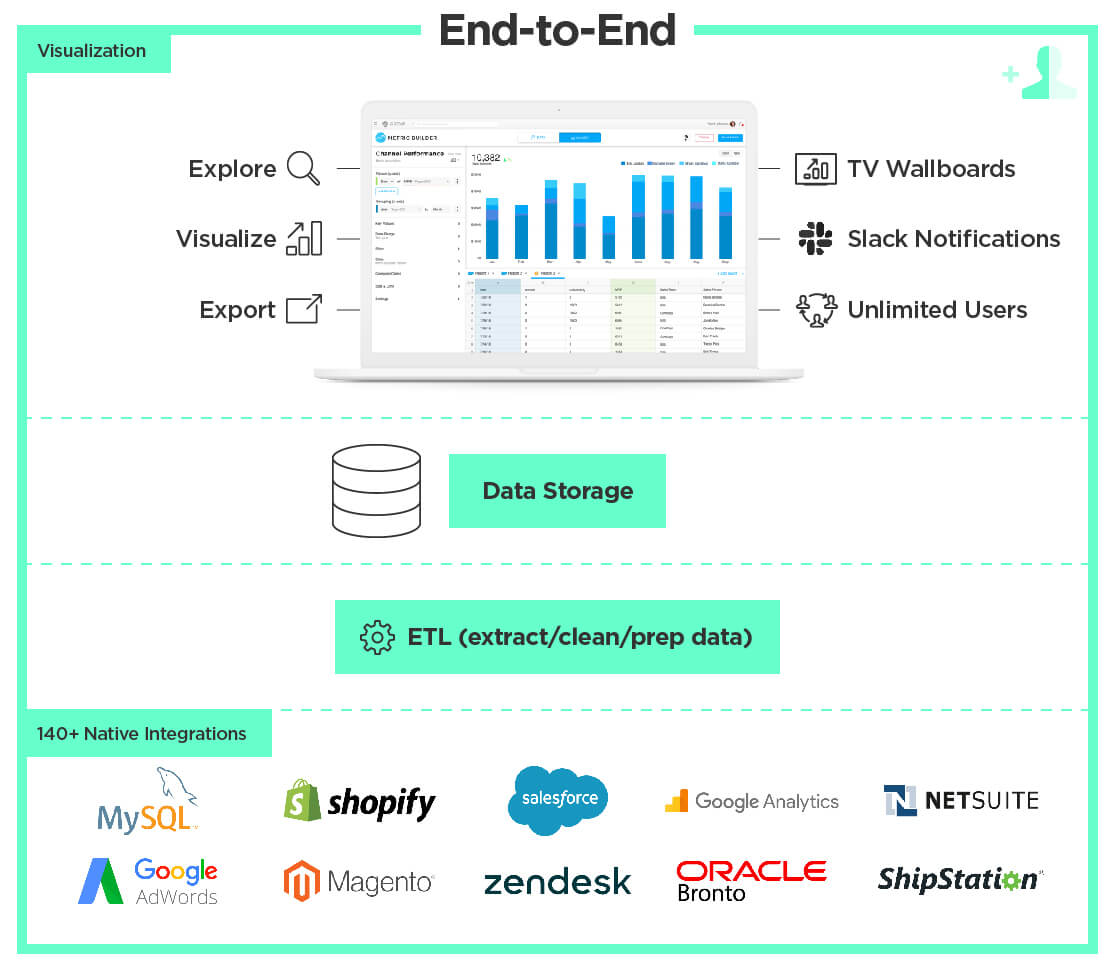Data warehouses are incredibly useful, but they’re also incredibly complex. To anyone other than a well-versed data analyst, the slow, inner machinations of your data warehouse are hard to understand. What isn’t hard to understand is that there’s always going to be a wait period for a newly-requested report.
Slow-pending data warehouse requests are not uncommon. There’s a few reasons for this delay: the number of data sources you have, your ETL process, the computing ability of your data warehouse, and the size of the request are just a few.

Slow-pending data warehouse requests are not uncommon.
Once you’ve set up your data warehouse to prepare a specific report you can get insights relatively quickly. However, if you’re looking for new or customized insights, your data must be extensively processed before it arrives in front of you, well-formatted and visualized.
In this blog post, we’ll explore the journey your data undergoes—from raw data to formatted insights—each time you request a report from a data warehouse.
The extract, transform, load stage
Your data resides in locations across various systems across each team and department in your organization. A data warehouse typically connects to four types of data sources:
- Databases (CRM, HRM, ERP, etc.)
- Flat files (excel sheets)
- Web services (marketing technologies, SaaS data collection platforms,etc.)
- Other collection sources that have an RSS feed
Each of your data sources present raw data in different formats. At this point, this data will need to be extracted from your data sources, transformed, and loaded into your data warehouse before it can be viewed comprehensively.
After your data is extracted from your data sources and before it’s loaded into your data warehouse, it’s sent to a staging environment. In staging, your data is held and prepared for storing and consumption. It will be checked for any issues that affect data quality, including incomplete data, missing fields, or duplicates.
Once any issues are identified and fixed, your data can be cleaned and transformed to ensure it’s formatted correctly for storage and further analysis.
The data warehouse stage
New and historic data will be stored and arranged into various groups and dimensions that make up the schemas used to pull the most frequent and standard reports your organization needs.
The business intelligence stage
This is the point, now that the data has been carefully prepared, when your analyst begins to generate the reports that you will view. They could do this directly, writing and executing queries that the data warehouse processes, but more often than not this is handled through some kind of business intelligence software.
The business intelligence stage is where you, the business user, are finally able to view your data.

How to speed up report requests
This is all to say that while a data warehouse plays a major role in your business intelligence strategy, it’s not an end-to-end solution. In order for a data warehouse to work, you need to coordinate additional ETL, analytics, and visualization software. The benefit of a data warehouse is the availability of in-depth insights supported by years of data. The downside is time.
The benefit of a data warehouse is the availability of in-depth insights supported by years of data. The downside is time.
So, what’s the alternative? While there isn’t a self-service tool that can completely replace the capability of a data warehouse, there are end-to-end business intelligence systems that do provide—to a certain extent—the data management, storage, visualization, and analytics capability of a custom technology stack.

Unlike larger incumbent organizations, growing organizations often need real-time data as well as new and unique report structures, something traditional data warehouses struggle to deliver quickly. Speed is a major contributor to the rise in popularity of SaaS and PaaS business intelligence systems such as Tableau, Power BI, Domo, and (ahem) Grow.
Consolidating your data’s journey into a single system drastically reduces time-to-insights and also allows both technical and non-technical team members alike to access the data they need.
Trying to determine if you’re ready for a data warehouse? Check out our data warehouse maturity checklist to see if it’s time to commit. Interested in an end-to-end business intelligence platform? Demo Grow.

.png)



